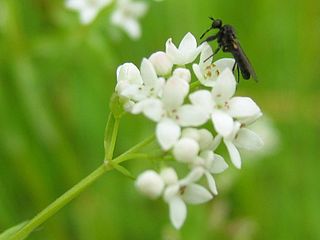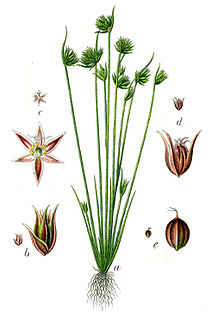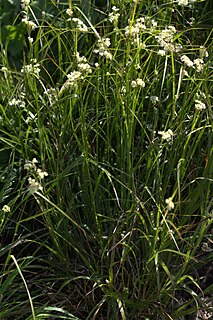
Rush Hudson Limbaugh III was an American radio personality, conservative political commentator, author, and television show host. He was best known as the host of The Rush Limbaugh Show, which was nationally syndicated on AM and FM radio stations.

Rush was a Canadian rock band formed in Toronto in 1968, consisting of Geddy Lee, Alex Lifeson, and Neil Peart. After its formation in 1968, the band went through several configurations before arriving at its classic lineup with the addition of Peart in 1974, just after the release of their eponymous debut album, which contained their first highly-regarded song, "Working Man".

The California Gold Rush (1848–1855) was a gold rush that began on January 24, 1848, when gold was found by James W. Marshall at Sutter's Mill in Coloma, California. The news of gold brought approximately 300,000 people to California from the rest of the United States and abroad. The sudden influx of gold into the money supply reinvigorated the American economy, and the sudden population increase allowed California to go rapidly to statehood, in the Compromise of 1850. The Gold Rush had severe effects on Native Californians and accelerated the Native American population's decline from disease, starvation and the California Genocide. By the time it ended, California had gone from a thinly populated ex-Mexican territory, to having one of its first two U.S. Senators, John C. Frémont, selected to be the first presidential nominee for the new Republican Party, in 1856.

Ian James Rush, is a Welsh former professional footballer who played as a forward. At club level Rush played for Liverpool from 1980–1987 and 1988–1996. He is the club's all-time leading goalscorer, having scored a total of 346 goals in all competitions at the club. At international level, Rush made 73 appearances for the Wales national football team and remained the record goalscorer for his country until 2018, with 28 goals between 1980 and 1996. He is widely regarded as one of the greatest strikers of his generation.

Scheuchzeria palustris, is a flowering plant in the family Scheuchzeriaceae, in which there is only one species and Scheuchzeria is the only genus. In the APG II system it is placed in the order Alismatales of the monocots.

The Essex Spartans are an American Football team based in Grays, Essex, England. The team has played under the Spartans name since 1998 following a merger between two local teams and currently play in the BAFA National Leagues, Southern Football Conference 2 East.

Cameron "Cam" Jerrell Newton is an American football quarterback for the New England Patriots of the National Football League (NFL). He previously played nine seasons with the Carolina Panthers, who selected him first overall in the 2011 NFL Draft. Newton had college football stints at Florida and Blinn before joining Auburn, where he won the Bowl Champion Series National Championship and Heisman Trophy in 2010. Nicknamed "Super Cam", he is the NFL career leader in quarterback rushing touchdowns at 70.

Galium palustre, the common marsh bedstraw or simply marsh-bedstraw, is a herbaceous annual plant of the family Rubiaceae. This plant is widely distributed, native to virtually every country in Europe, plus Morocco, the Azores, Turkey, Turkmenistan, Western Siberia, Greenland, eastern Canada, St. Pierre & Miquelon, and parts of the United States. The species is classified as a noxious weed in New York, Pennsylvania, Massachusetts, Connecticut, Vermont and New Hampshire. It is considered naturalized in Kamchatka, Australia, New Zealand and Argentina.

Juncus articulatus is a flowering plant species in the rush family Juncaceae. It is known by the common name jointleaf rush or jointed rush, which can also refer to J. kraussii from Australia. It is native to Eurasia, Canada, Greenland, and much of the United States. It grows in moist areas, such as wet sand, and thrives in calcareous soils. J. articulatus was found to be more sensitive to drought and salt stress than its congeners J. acutus and J. maritimus. It is a perennial herb producing mainly erect stems from a short rhizome. The stem may root at nodes, and it generally has one or more flattened hollow cylindrical leaves up to 10 centimeters long. Transverse internal partitions or joints may be seen or felt in the leaf of the plant.

Juncus capitatus is a species of rush known by the common names dwarf rush and leafybract dwarf rush. It is native to Europe, Asia and North Africa. It is also an introduced species in parts of North America such as California and the Gulf Coast. It grows in moist areas, such as wet sand, vernal pools, and ditches.

Equisetum hyemale is a perennial herbaceous vascular plant in the horsetail family Equisetaceae. It is a native plant throughout the Holarctic Kingdom, found in North America, Europe, and northern Asia.

Juncus ensifolius is a species of rush known by the common names swordleaf rush, sword-leaved rush, and three-stamened rush. It is native to much of western North America from Alaska to central Mexico, and into eastern Canada. It is present in Japan and far eastern Russia, and it has been introduced to many other regions of the world, including Europe, New Zealand, and Australia. It is a plant of wet areas in many types of habitat. This is a rhizomatous perennial herb forming clumps of stems 20 to 60 centimeters tall. The flat but curving leaves are mostly located at the base of the stems and are variable in length. The inflorescence is an array of many rounded clusters of many flowers each. Each flower has a number of dark brown to black tepals a few millimeters long and usually three small stamens enclosed between them. The fruit is an oblong capsule with a small beak on the tip.

Ficinia nodosa, the knotted club-rush or knobby club-rush, is a rhizomatous perennial in the family Cyperaceae, thought to be native to Australia and New Zealand, it is widespread in the Southern Hemisphere. It grows to between 15 and 220 cm in height. It occurs in sandy coastal areas near lakes and sea in Western Australia, South Australia, Tasmania, Victoria, New South Wales and Queensland.

Crepis paludosa, the marsh hawk's-beard, is a European species of plants in the dandelion tribe within the sunflower family. It is widespread across much of Europe with isolated populations in Iceland, the Ural Mountains, and the Caucasus.

Luzula multiflora, the common woodrush or heath wood-rush, is a species of flowering plant in the rush family.

Narcissus jonquilla, commonly known as jonquil or rush daffodil, is a bulbous flowering plant, a species of the genus Narcissus (daffodil) that is native to Spain and Portugal but has now become naturalised in many other regions: France, Italy, Turkey, the former Yugoslavia, Madeira, British Columbia in Canada, Utah, Illinois, Ohio, and the southeastern United States from Texas to Maryland.

Juncus pallidus, commonly known as the great soft-rushpale rush, giant rush, or leafless rush is a species of rush that is native to southern Australia, New Zealand, Norfolk Island, and Lord Howe Island. It is a vigorous, tufted, tussock-forming, rhizomatous perennial herb with culms growing to 70–135 cm in height. The inflorescence, which is 25–185 mm long, contains many straw coloured flowers, each with six floral segments. It is usually found in moist, nutrient-poor soils subject to periodic flooding, such as fresh and brackish waterways, including swamps, creek banks, lake edges and sand seeps.

Pilularia globulifera, or pillwort, is an unusual species of fern in the family Marsileaceae. It is native to western Europe, where it grows at the edges of lakes, ponds, ditches and marshes, on wet clay or clay-sand soil, sometimes in water up to 30 cm (12 in) deep.

Luzula nivea, commonly known as snow-white wood-rush, snowy wood-rush and lesser wood-rush, is a species of perennial plant in Juncaceae family.

Trichophorum cespitosum, commonly known as deergrass or tufted bulrush, is a species of flowering plant in the sedge family. It was originally described by the Swedish naturalist Carl Linnaeus in 1753 as Scirpus cespitosus, but was transferred to the genus Trichophorum by the Swedish botanist Carl Johan Hartman in 1849, becoming Trichophorum cespitosum.




















